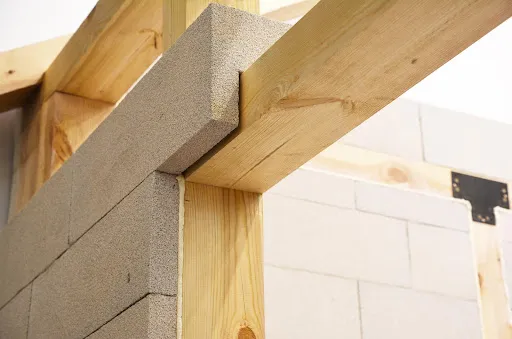In the intricate world of architecture, even the smallest components play a vital role in the overall integrity and aesthetics of a building. Lintels, the horizontal supports above windows and doors, are no exception. These unassuming features serve both functional and decorative purposes. In this article, we delve into the significance of lintels, the signs of their deterioration, and the importance of timely repair to maintain both the structural soundness and visual appeal of a building.
Table of Contents
The Role of Lintels
Lintels are load-bearing elements that provide essential support to the masonry or brickwork above openings like windows and doors. Functionally, they distribute the weight of the structure above and prevent the sagging or collapsing of the wall. Aesthetically, lintels frame openings and contribute to the architectural character of a building.
Understanding Lintel Deterioration
Over time, lintels can experience deterioration due to various factors, including weather exposure, moisture infiltration, and the settling of the building. One common issue is rust in steel lintels, which weakens the material and causes it to expand, leading to cracks in the surrounding masonry. In the case of concrete lintels, exposure to freeze-thaw cycles can result in cracking and spalling.
Signs of Lintel Damage
Detecting early signs of lintel damage is crucial to prevent further structural issues. Common indicators include cracks in the surrounding masonry, visible rust stains or corrosion, bowing or sagging of the lintel itself, and signs of water infiltration such as damp spots or mold growth. These signs should not be ignored, as prompt repair can prevent the problem from worsening and save both time and money in the long run.
The Importance of Lintel Repair
Lintel repair is not just about maintaining the aesthetics of a building; it’s about preserving its structural integrity. A compromised lintel can lead to serious consequences, such as wall collapse or sagging, which can affect the stability of the entire structure. Timely repair not only prevents further damage but also ensures the safety of occupants.
Professional Assessment and Repair
Lintel repair requires the expertise of professionals who understand the nuances of masonry and construction. A qualified mason will assess the extent of damage, identify the underlying causes, and recommend an appropriate repair strategy. Repair methods may include reinforcing the lintel with steel plates or bars, applying anti-corrosion coatings, and replacing damaged masonry.
Restoration and Aesthetic Considerations
Lintel repair is an opportunity to restore both functionality and aesthetics. Skilled masons not only address structural issues but also restore the visual appeal of the lintel and its surroundings. Matching the color, texture, and design of the existing masonry ensures that the repaired area seamlessly blends with the rest of the building.
Preventive Measures
Prevention is key to avoiding extensive lintel damage. Regular building inspections, particularly focusing on lintels and surrounding masonry, can identify potential issues early. Proper drainage systems, including effective flashing above lintels, can redirect water away from vulnerable areas and prevent moisture-related deterioration.
Conclusion
In the intricate tapestry of architecture, lintels play a pivotal role in supporting structures and enhancing visual appeal. Their deterioration can lead to serious consequences, affecting both safety and aesthetics. Lintel repair is not just about fixing a problem; it’s about upholding the integrity of a building and preserving its history for generations to come. As you gaze upon buildings old and new, remember that even the most unassuming features have a story to tell, and through proper repair and preservation, that story can continue to unfold.

